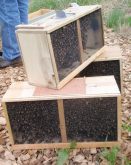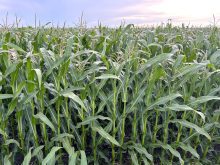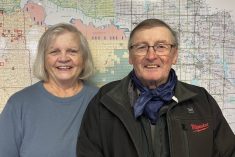When it comes to the Bow River, everyone can have their cake and eat it, too.
A new report says that, if managed corrected, there’s enough water flowing through the Bow to provide for healthy aquatic ecosystems, irrigation, recreation and huge urban growth in Calgary, all the while mitigating floods and droughts.
“All the demands on the river are forecast to increase over the next 50 years,” said Mike Kelly, chair of the Bow River Basin Council, which jointly funded the study along the Alberta Water Research Institute.
Read Also

Canola’s clubroot success story
At one time, scientists, agronomists and growers were extremely worried clubroot would spread across the Prairies and devastate Canada’s canola industry.
“We were hearing that we won’t have enough water for them all. We wanted to know the real issues and find practical solutions. We’ve found we can manage the river for economic benefits, the environment, and recreation opportunities at a reasonable cost.”
The Bow River Project developed a computer model of all the flows along the river, and tributaries such as the Sheep and Highwood, using 67 years of records from Alberta Environment. It then looked at “what-if” scenarios.
“We asked what if Calgary’s water needs double, what if the irrigation districts return less water, what’s the minimum flow that protects the fishery below Calgary, can we improve the aquatic ecosystems of Kananaskis Country, the wild lands and provincial parks in the basin?” said Kelly. “Our goal was to find how we could improve the environment and meet some of our other goals, and definitely not to harm the environment.”
With greatly increased water demand, the model found the river might become so shallow it would freeze to the bottom in winter. But the model also delivered some surprises. For example, while Bow Glacier is an important source of water, particularly for Banff National Park, it contributes only 2.5 per cent of the river’s water. About 80 per cent comes from snow pack.
Water bank
The consortium partners reasoned that the six large reservoirs on the Upper Bow could be used as a water bank to store water in times of plenty and release it when flows were low. They examined four management scenarios on 45 criteria that affect economic and environmental benefits of the river. The model predicts keeping Lower Kananaskis Lake filled would provide the most environmental benefits and provide sufficient flows to meet the needs of Calgary, the Siksika Nation, and the Western, Eastern and Bow River Irrigation Districts. Raising the level of the lake by three feet provided even greater benefits for relatively little capital cost.
“Lower Kananaskis is currently empty by April,” said Kelly. “If it were kept full, fish populations would be three to six times higher and we’d have significantly more trumpeters, loons and other waterfowl using that area than we do now. And there would be a dramatic decrease in the number of low-flow days below Bassano.”
Another way to better manage water flow is via the river’s 11 hydroelectricity generating reservoirs. Currently, TransAlta manages the flows to maximize power production, but the reservoirs could be used to hold water at peak times and prevent flooding in the lower basin.
Lower power revenue
There is a cost to stabilizing the Lower Kananaskis and managing the river for all the groups that depend on it. TransAlta’s power production, about 9,000 kW hours annually, and its profits from its Bow River infrastructure would drop because power would be produced in different months, possibly preventing the company from selling power at peak prices.
But Kelly, who retired two years ago as director of water resources for the company, noted his former employer is a council member and has not challenged the consortium or its work.
“All the members of the council and the consortium are really happy with the information from the model,” said Kelly. “The question now is, how do we get there from here? Somebody will have to negotiate with TransAlta, probably the Alberta government.”
There’s no precise estimate of what improved management would cost, but Kelly says a ballpark figure of $1.8 million a year is “not unrealistic,” and very affordable.
“It’s very inexpensive, relative to the benefits,” he said.
“All the people involved agreed on everything in the proposal. We all share in the river we love. We think it can be a win-win-win.”
———
Thequestionnowis,howdowegettherefromhere?SomebodywillhavetonegotiatewithTransAlta,probablytheAlbertagovernment.”
MIKE KELLY














